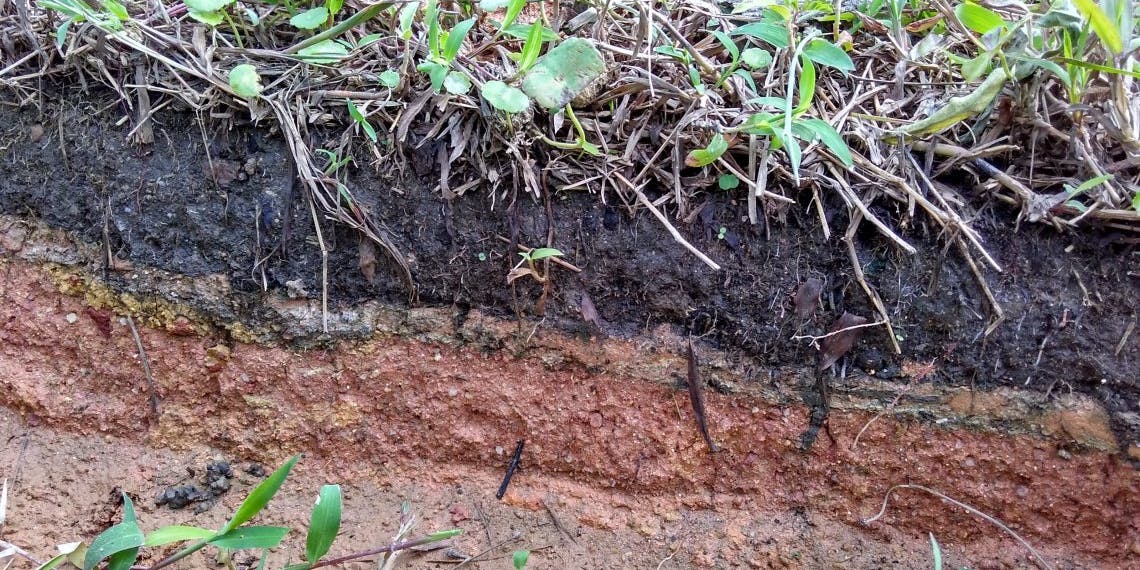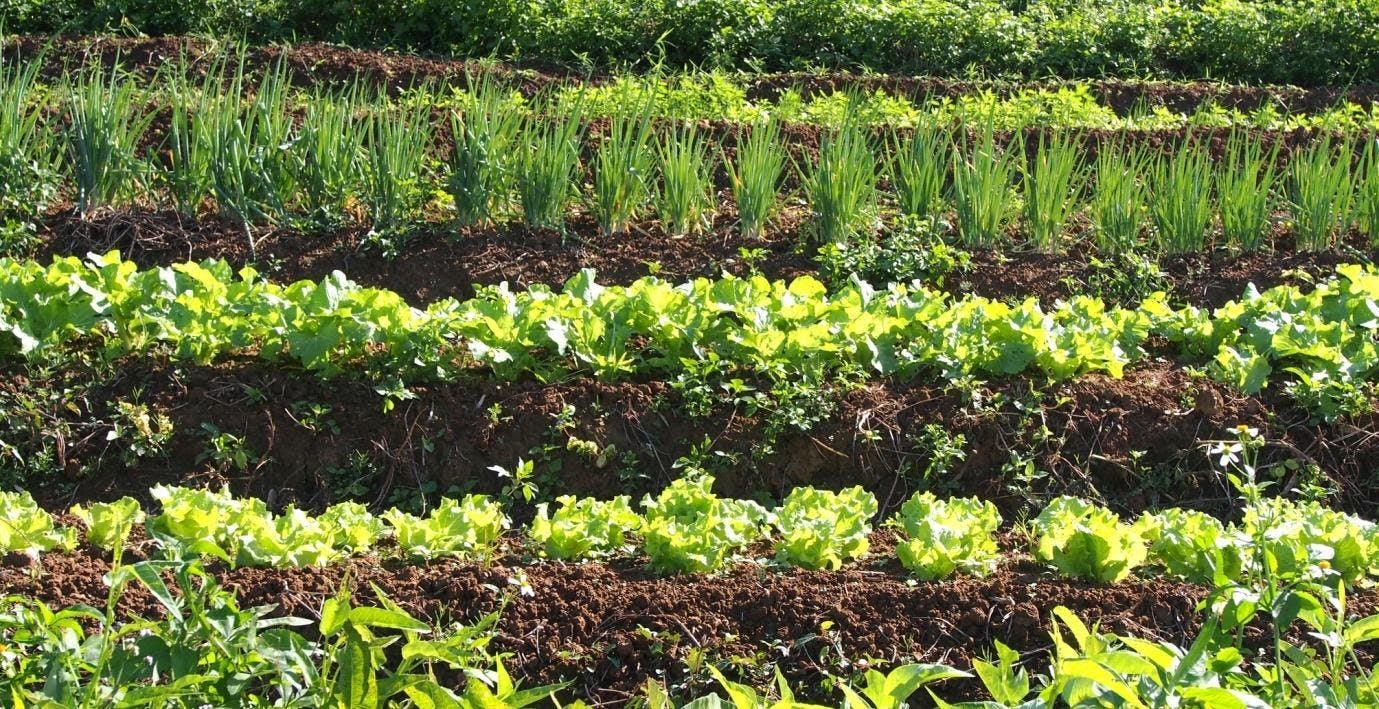
Soil solution to food security and climate change
This article is part of our theme-based journazine titled "The Sauce". The inaugural issue focuses on Soil, as we believe that soil is the foundation of all things to come. Print and digital copies of the full issue are available here. Check it out for more stories from the community and how Foodscape Collective's projects have come about.
Healthy soil is living soil
Living soil is a miracle. More than 90% of our food comes directly or indirectly from soil. Plants absorb sunlight, atmospheric CO2 and water to make glucose, releasing oxygen into the atmosphere at the same time. Through a myriad of chemical reactions, the glucose is then synthesised to a wide variety of carbon compounds, including carbohydrates (such as cellulose and starch), proteins, organic acids and oils as the plants grow. Some of these carbon compounds are sent down to the plant roots and secreted into the soil to nurture the soil microbes (bacteria and fungi). These microbes are then eaten by bigger soil organisms like nematodes and protozoa, which are in turn fed on by even bigger organisms, and so on.
There are also soil organisms which decompose manure, dead plant and animal matter, releasing plant-available nutrients into the soil.
Some microbes, such as rhizobial and free-living bacteria, fix atmospheric nitrogen and convert it to a form that plants can absorb. Some microbes mine mineral nutrients from rocks. One such group of “mining” microorganisms is called mycorrhizal fungi. They form special symbiotic relationships with plant roots. They connect with plant roots to provide access to the freshly-released mineral nutrients. In return, the plant roots provide the fungi with tasty, energy-rich carbohydrates that the fungi use for growth.
Through such biological activities of a wide range of soil organisms, energy, nutrients and minerals are cycled through the soil food web, nourishing the soil for healthy plant growth.

Humus and soil organisms support healthy plant growth
Humus – the wonderful substance that will save the world
Humus is the dark brown, sweet smelling substance that drives healthy, productive soils. It has many unique and remarkable properties essential for healthy plant growth. Humus improves soil tilth, porosity, water holding capacity and infiltration rate. Biomolecules of humus can help retain ionized nutrients that are produced by the natural cycling of organic biomass and compost and make them more readily available for plants.
Humus is formed through a multitude of complex biological processes. The soil organic matter such as root exudates and dead organic matter is first decomposed, ingested, partly assimilated and partly excreted. After rounds of ingestion and excretion, a fraction of the organic matter cannot be decomposed further and gets transformed by a process called humification into highly complex, large carbon polymers, made up mainly of carbon (60%) and nitrogen (6-8%). Together with soil minerals and soil aggregates, it forms an inseparable part of the soil matrix that can remain intact for hundreds, sometimes thousands, of years. At this stage, humus has been formed in soil, and carbon has been successfully sequestered from the atmosphere (where it causes climate change problems) into stable soil organic carbon, which improves soil and promotes healthy plant growth (a solution).
The French government’s 4 per 1000 Initiative, if adopted and implemented on a large scale by the countries across the globe, has the power to cool the planet and feed the world without using risky and expensive technologies.
Too much carbon in the air is a problem. Carbon in the soil is a solution.
4 per 1000 Initiative – sequestering carbon
Atmospheric CO2 concentration has reached 410 ppm as of mid-2018. To avoid dangerous climate change, it needs to be reduced to below 350 ppm. Reducing carbon emissions, even if done rapidly, is not going to be enough. There is already too much CO2 in the air and we must take the excess carbon out of the atmosphere and store it in soil, where it belongs (Carbon Sequestration). Too much carbon in the air is a problem. Carbon in the soil is a solution.
The French government recognizes that regenerative agriculture is a safe, economic and socially acceptable way to effectively sequester carbon. Their solid scientific documentation shows that an annual growth rate of 0.4% in soil carbon through agricultural carbon sequestration would halt the increase of atmospheric CO2 related to human activities. They launched the 4 per 1000 Initiative at COP 21 and are calling on all countries to join them to transition towards a productive, highly resilient agriculture for food security and climate change.
Opportunities in Singapore
I see Singapore’s potential in participating in this global effort of carbon sequestration. There are many empty green spaces all around Singapore, probably categorized as “Reserve sites”, which refer to areas where the specific use has not been determined. Some of these spaces can be converted to small farms where food is grown in a regenerative manner, sequestering carbon, integrating urban ecology, food production and urban lifestyle. Innovative land-use policies can be created to allow interested groups to convert some of the vacant green spaces into biodiverse organic farms.
A typical reserve site that may be suitable for establishing a small farm
I have some experience gained from working on a few lawns in different places in Singapore, attempting to establish food gardens. The soil underneath the lawns are usually very poor red/yellow clay soil, with very little organic matter. There may even be rocks and broken bricks. It’s been very challenging, and therefore fun, to convert these badly damaged soils to more fertile soils in which to grow edible plants. Although the science behind soil improvement, humification is very complex, our approach can be surprisingly simple. We just need to pay attention to a few simple principles, such as
* The richer the biodiversity, the better nutrients cycle. This is how the soil gets its fertility.
* Law of Return – all organic waste must be returned to the soil, so that nutrients and materials can be recycled through biological processes.
* The health of soil, plant, animal and man is one and indivisible.
I see the land scarcity of Singapore as an advantage in developing small natural farms all around Singapore. These farms would be near to where people live, bringing people closer to the source of food. Living in close proximity to a farm makes it easier to have access to fresh local food and allows people to see production in action. Food scraps can be returned conveniently to the farm for composting, achieving the goal of “Farm to table and back to farm”.
About the author
Tang Hung Bun has been advocating French government's 4/1000 Initiative that promotes regenerative agricultural practices to increase soil organic carbon in order to reverse climate change. Mr. Tang has been practising natural farming for over 6 years in various places in Singapore. He has visited many farms of different types (organic, natural and conventional) and sizes in Taiwan and Hong Kong and has learned from their strengths and weaknesses. He hopes to establish a successful small natural farm in Singapore to influence people to join the global movement of responsible, regenerative farming. Mr. Tang advocates that soil can save us from climate crisis, but we need to save it first. Most of Singapore's soils have been or are being destroyed. He hopes to see more people take action in saving Singapore's soils.
Share this article
Dig Around

Chris - on homecoming; unpacking "sustainability", self-care for farmers and gardeners, and reality checks

Ee Peng - a syntropic Zen farmer in an industrial space

Marcus - your friendly neighbourhood (market) farmer

Local Food Systems and Climate Change
Contact Us
Drop us an email or DM on Instagram if you would like to give us feedback, support us in any way, or just to connect!
Foodscape Collective
Foodscape Collective is a ground-up community with a mission to co-create a fair and inclusive circular food system for all. We work together to create communities and livelihoods through collaborative and supportive practices.
Copyright (C) 2025 - Foodscape Pages. All Rights Reserved